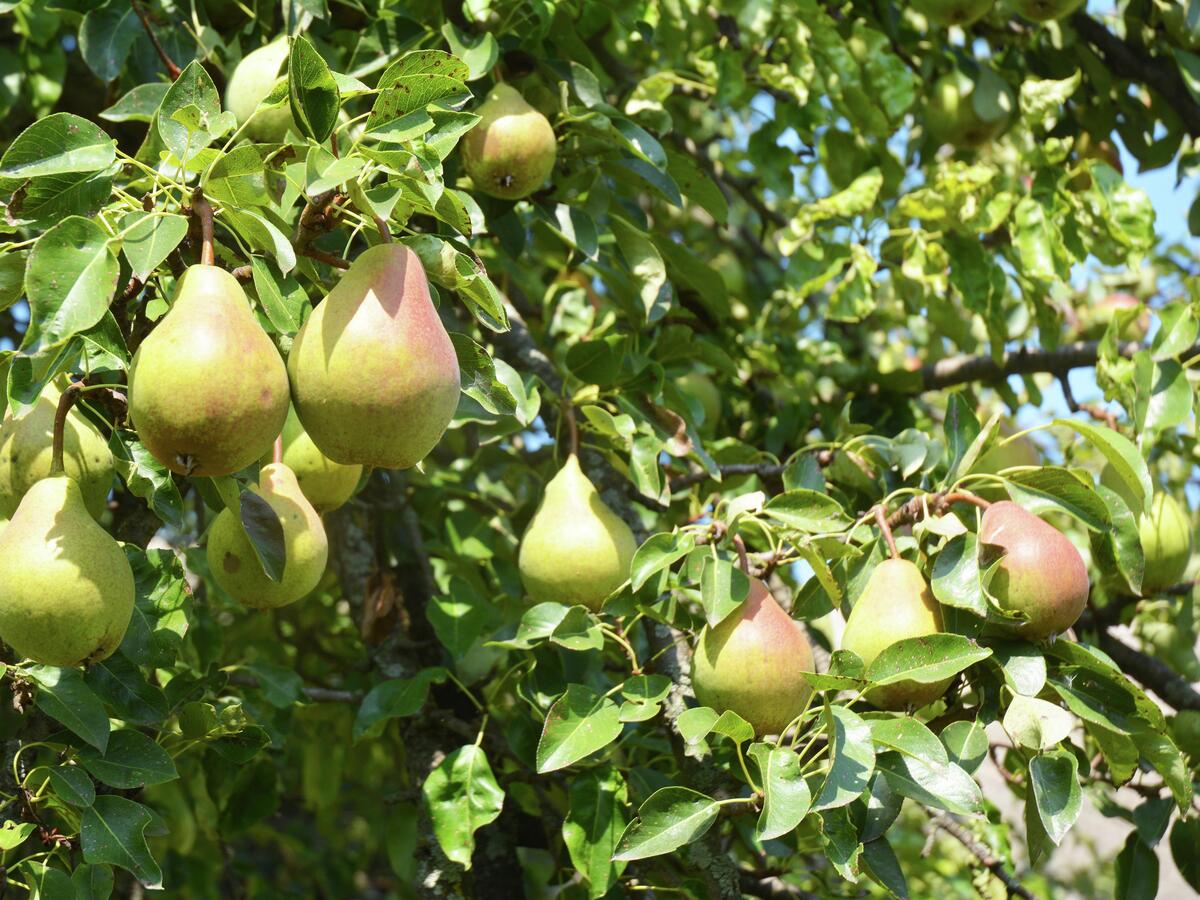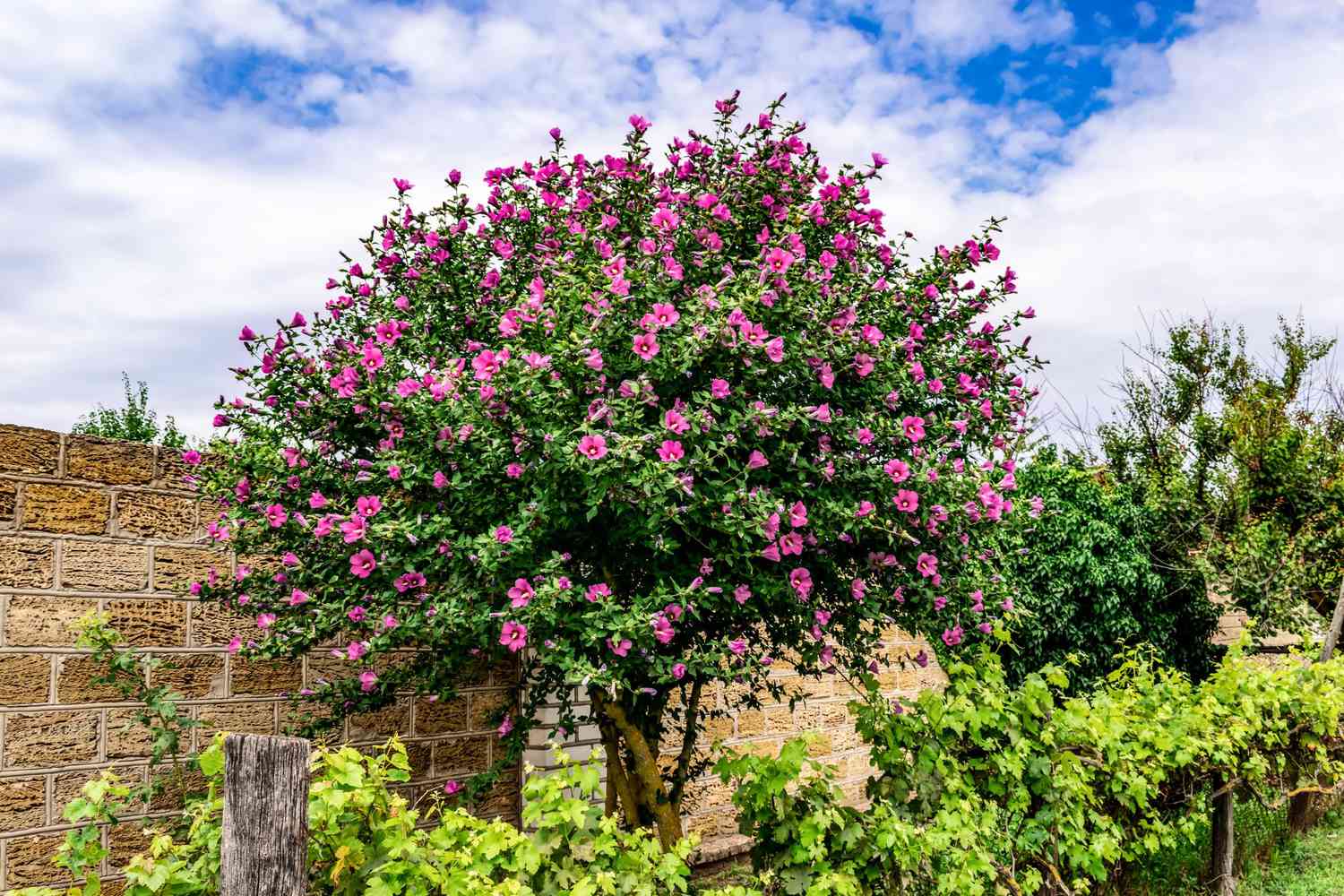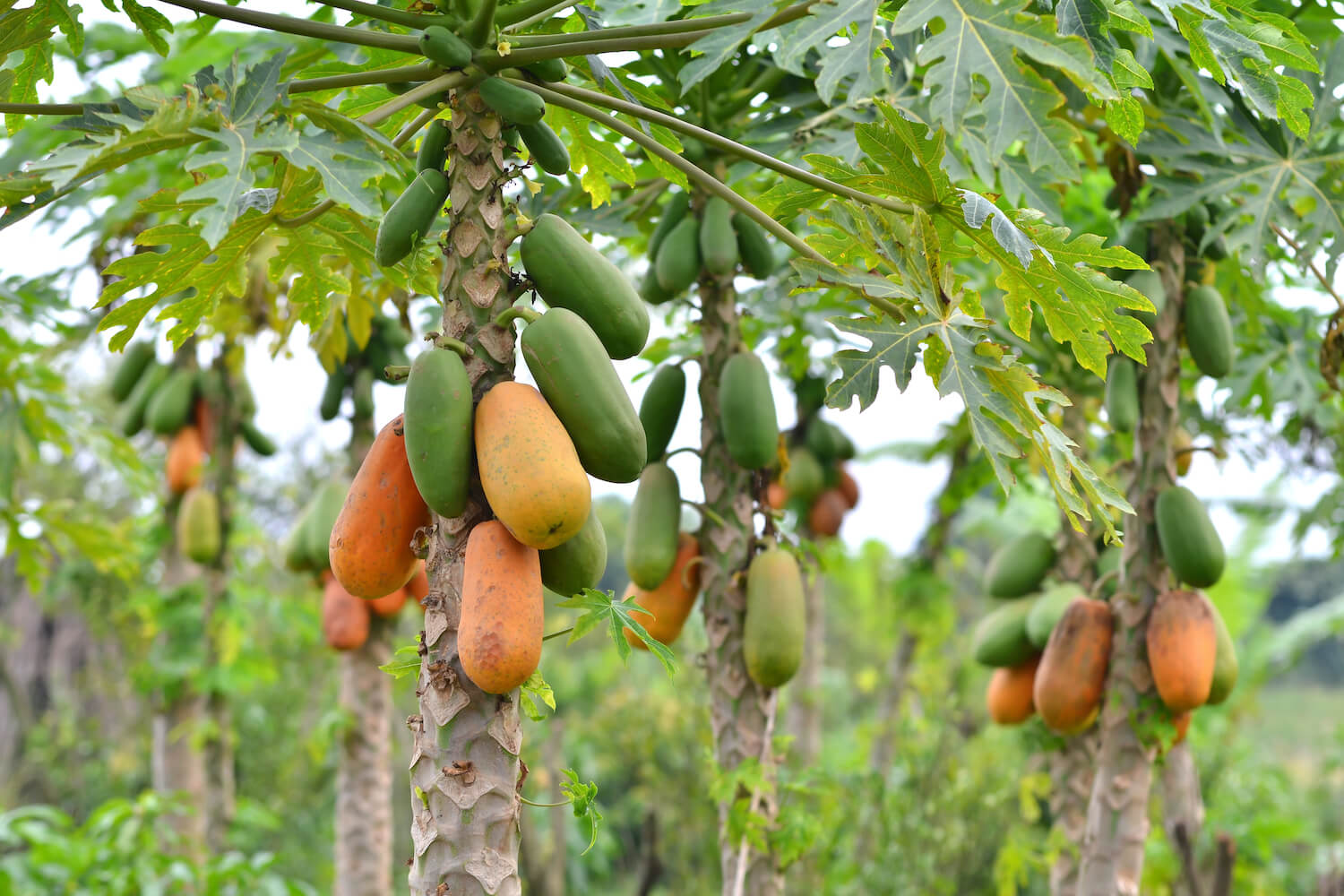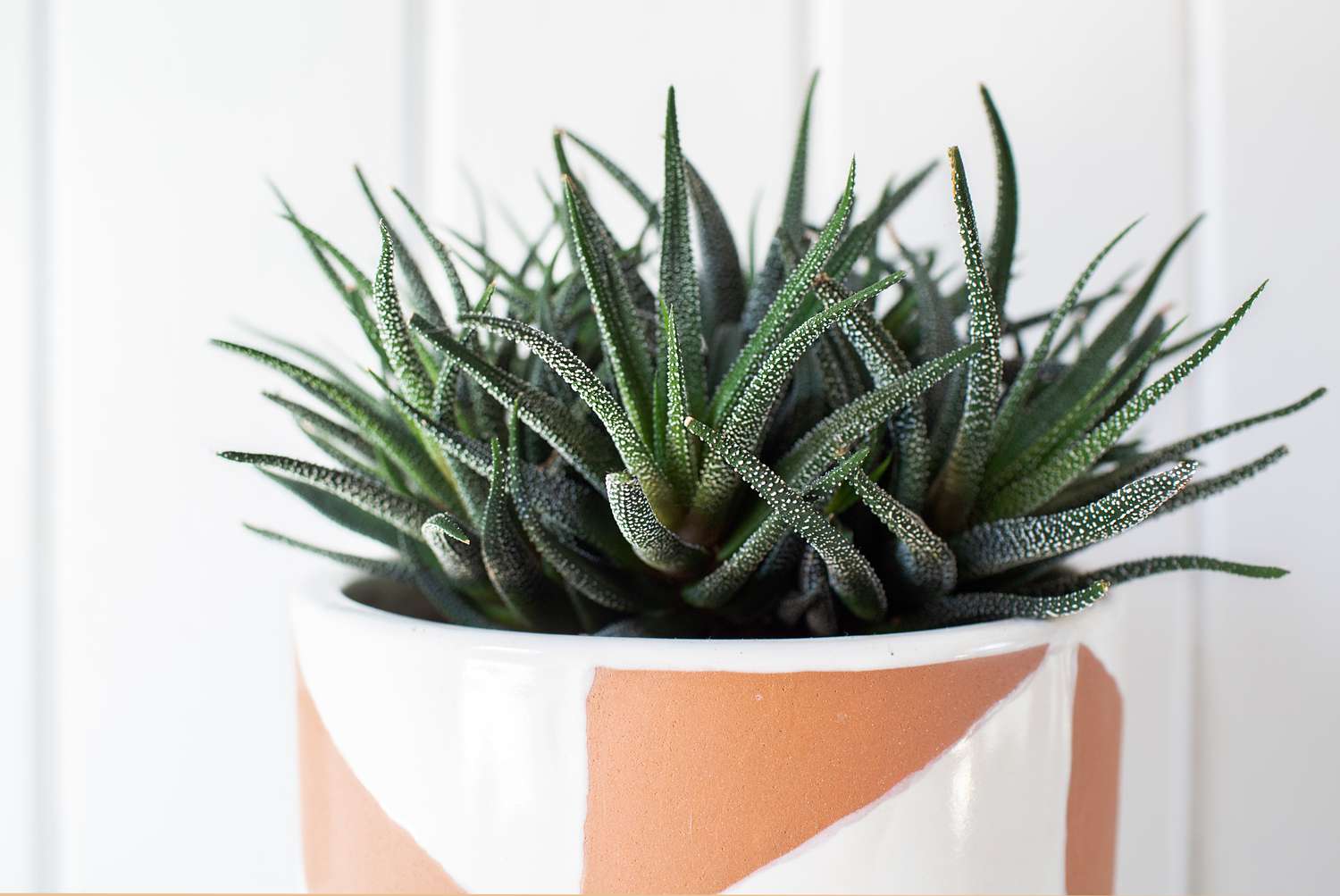Home>Gardening Techniques>Plant Care>How Big Do Lavender Trees Get
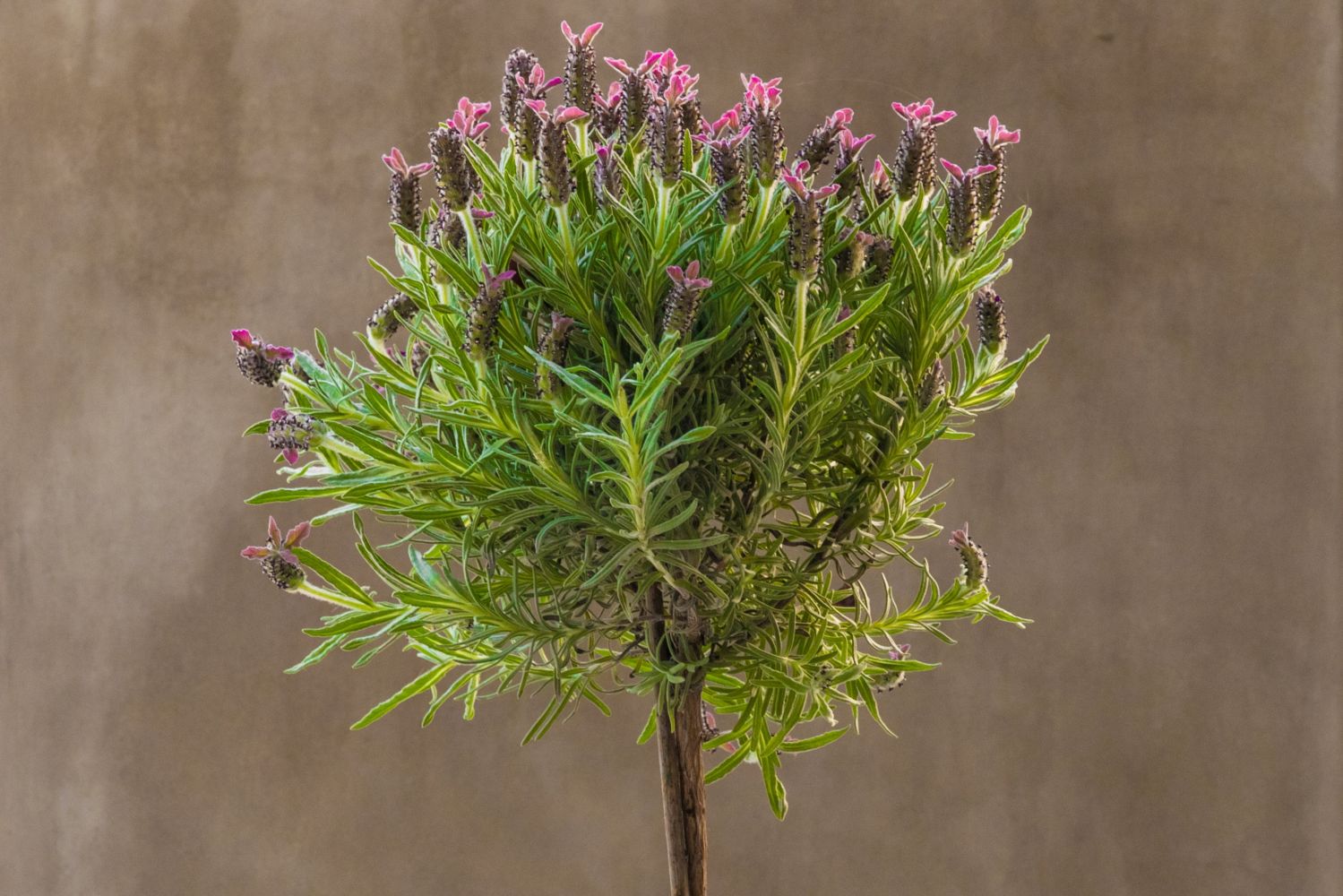

Plant Care
How Big Do Lavender Trees Get
Modified: January 22, 2024
Discover everything you need to know about lavender tree plant care, including how big they can grow. Enhance your gardening skills and create a beautiful lavender oasis.
(Many of the links in this article redirect to a specific reviewed product. Your purchase of these products through affiliate links helps to generate commission for Chicagolandgardening.com, at no extra cost. Learn more)
Table of Contents
Introduction
Welcome to the world of lavender trees! If you’re a plant enthusiast or looking to add some beauty and fragrance to your garden, you’ve come to the right place. Lavender trees are a stunning addition to any landscape, with their vibrant purple flowers and aromatic foliage.
In this comprehensive guide, we will explore everything you need to know about lavender trees. From understanding their growth patterns to providing optimal care, we’ll cover it all.
Lavender trees, also known as Lavandula trees, are a woody perennial plant that belongs to the mint family. They are native to the Mediterranean region, where they thrive in the warm, dry climates. These trees can add a touch of elegance to any garden or outdoor space, attracting bees, butterflies, and other pollinators.
One of the first questions that may come to mind when considering lavender trees is, “How big do they get?” Well, the size of lavender trees can vary depending on several factors, including the specific variety, growing conditions, and pruning techniques. In general, lavender trees can grow anywhere from 1 to 4 feet tall, with a spread of 2 to 3 feet.
Throughout this article, we will delve deeper into the factors that influence the size of lavender trees and provide insights into the ideal conditions for their growth. Additionally, we will explore common lavender tree varieties, discuss pruning and maintenance techniques, and address potential problems you may encounter along the way.
So, whether you’re a newbie gardener or a seasoned green thumb, get ready to unlock the secrets of growing and caring for lavender trees. Let’s jump right in and discover the joy of cultivating these delightful plants!
Understanding Lavender Trees
Lavender trees are not your typical trees—they are a unique variation of the lavender plant, specifically bred to have a tree-like growth habit. While lavender is typically grown as a compact perennial herb, the lavender tree cultivars offer a taller and more structured form.
One of the defining features of lavender trees is their beautiful and fragrant flowers. Lavender trees produce long spikes of small, delicate flowers in vibrant shades of purple, pink, blue, and white. These flowers not only add a pop of color to your garden but also attract bees, butterflies, and other beneficial insects.
When it comes to their foliage, lavender trees have narrow, gray-green leaves that are highly aromatic. Crushing a leaf between your fingers releases a soothing, herbal fragrance—a true sensory delight. This aromatic foliage is also known to repel pests, making lavender trees a natural pest control option for your garden.
In terms of growth habit, lavender trees exhibit a compact and bushy form, with multiple stems branching out from the base. They often have a rounded or globular silhouette, resembling small shrubs or topiaries. This makes them a great choice for adding structure and visual interest to your garden borders or container plantings.
These trees thrive in full sun, requiring at least 6 to 8 hours of direct sunlight per day. They prefer well-draining soil and are tolerant of various soil types, including sandy, loamy, and rocky soils. However, it’s essential to ensure that the soil is not overly wet, as lavender trees are prone to root rot in waterlogged conditions.
Another characteristic to note is that lavender trees are drought-tolerant once established. Their ability to withstand dry conditions makes them a low-maintenance choice for those who live in arid or water-restricted areas.
Now that you have a basic understanding of what lavender trees are and their key attributes, it’s time to explore the factors that can affect the size of these trees. Let’s delve deeper into the next section to unravel the mysteries behind the growth of lavender trees.
Factors Affecting Lavender Tree Size
The size of lavender trees can be influenced by various factors. Understanding these factors will help you create the ideal conditions for their growth and determine the ultimate size of your lavender tree. Here are the key factors that can impact lavender tree size:
- Variety: Different lavender tree varieties have varying growth habits and sizes. Some varieties naturally have a more compact growth habit and stay smaller, while others can grow taller and wider. Before choosing a lavender tree variety, research its mature size to ensure it fits well in your desired space.
- Growing Conditions: The growing conditions provided to lavender trees can significantly impact their size. Factors such as sunlight, soil quality, and moisture levels all play a role. Lavender trees thrive in full sun, so if they are grown in shaded areas, they may not reach their full potential size. Additionally, poor soil quality or overwatering can stunt growth and limit size. Providing optimal growing conditions will ensure your lavender trees grow to their full potential.
- Pruning: Pruning plays a crucial role in controlling the size and shape of lavender trees. Regular pruning helps maintain a desired size, encourages bushier growth, and prevents legginess. By trimming back the branches and removing spent flowers, you can promote new growth and prevent the tree from becoming unruly.
- Age: The age of the lavender tree can also influence its size. Young trees tend to be smaller and less established compared to mature trees. As the tree grows and develops a stronger root system, it has the potential to reach its maximum size. Providing proper care and allowing sufficient time for the tree to grow will help it reach its full size potential.
It’s important to consider these factors when planning and caring for your lavender trees. By selecting the right variety, providing optimal growing conditions, implementing proper pruning techniques, and allowing sufficient time for growth, you can help your lavender trees reach their maximum potential size.
In the next section, we will explore the ideal conditions for growing lavender trees, ensuring they thrive and achieve their full size and beauty.
Ideal Conditions for Lavender Tree Growth
To ensure the healthy growth and development of lavender trees, providing the ideal growing conditions is essential. Here are the key factors to consider:
- Sunlight: Lavender trees thrive in full sun, so it’s crucial to choose a location that receives at least 6 to 8 hours of direct sunlight per day. Without adequate sunlight, lavender trees may become weak, leggy, and fail to reach their full size.
- Soil: Lavender trees prefer well-draining soil. They do best in sandy or loamy soils with good drainage. If your soil is heavy or clay-like, amend it with organic matter, such as compost, to improve drainage. Well-draining soil ensures that the tree’s roots do not sit in water, preventing root rot and other water-related problems.
- Watering: While lavender trees are drought-tolerant once established, they still require water during their initial establishment period. Water consistently but avoid overwatering, as excessive moisture can lead to root rot. Allow the soil to dry out slightly between waterings to promote healthy root growth.
- Temperature: Lavender trees thrive in warm climates and are not tolerant of extreme cold. They prefer temperatures between 60 to 75 degrees Fahrenheit (15 to 24 degrees Celsius). If you live in a region with colder winters, be prepared to protect your lavender trees from freezing temperatures with mulch or temporary covers.
- Air Circulation: Good air circulation is important to prevent fungal diseases and maintain overall plant health. Planting lavender trees in areas with good airflow helps prevent the buildup of moisture, which can lead to issues like powdery mildew. Avoid overcrowding plants and ensure proper spacing between individuals for optimal air movement.
By providing these ideal growing conditions, you can ensure that your lavender trees have the best chance of reaching their full potential. Remember to regularly monitor and adjust watering based on weather conditions, as well as periodically check the soil quality to ensure proper drainage. Maintaining these favorable conditions will promote healthy growth and ensure your lavender trees achieve their maximum size and beauty.
In the following sections, we will explore common lavender tree varieties, discuss pruning and maintenance techniques, and address potential problems you may encounter along the way. So, let’s continue our journey to unlock the secrets of successful lavender tree care!
Common Lavender Tree Varieties
Lavender trees come in a variety of cultivars, each with their unique characteristics and growth habits. Here are some commonly available lavender tree varieties:
- English Lavender (Lavandula angustifolia): This is one of the most popular lavender varieties known for its intense fragrance and vibrant purple-blue flowers. English lavender trees typically reach a height of 2 to 3 feet, making them an excellent choice for smaller gardens or container plantings.
- French Lavender (Lavandula dentata): French lavender trees are characterized by their serrated, gray-green leaves and profusion of purple or pink flowers. They have a slightly taller and more open growth habit, reaching heights of 2 to 4 feet. French lavender is known for its strong fragrance and is often used in perfumes or potpourri.
- Spanish Lavender (Lavandula stoechas): Spanish lavender trees have distinctive “rabbit ear” like bracts on top of their flower spikes, which add a unique visual appeal. These trees can grow up to 2 to 3 feet in height and produce beautiful purple, pink, or white flowers. They prefer warmer climates and are well-suited for Mediterranean-style gardens.
- Hidcote Lavender (Lavandula angustifolia ‘Hidcote’): This lavender variety is known for its deep purple flowers and compact growth habit. Hidcote lavender trees typically reach heights of 1 to 2 feet, making them suitable for smaller garden spaces or border plantings.
- Provence Lavender (Lavandula x intermedia ‘Provence’): Provence lavender trees are prized for their stunning scent and long flower spikes. They can grow up to 2 to 3 feet tall and produce lavender-blue flowers. Provence lavender is known for its fragrance, making it a popular choice for essential oil production.
These are just a few examples of the many lavender tree varieties available. When selecting a lavender tree for your garden, consider factors such as preferred growing conditions, mature size, flower color, and fragrance. Having a variety of lavender tree cultivars in your garden can create an exquisite display of colors and scents.
Now that you’re familiar with common lavender tree varieties, let’s move on to the next section, where we’ll explore the importance of pruning and maintenance for these beautiful trees.
Pruning and Maintenance of Lavender Trees
Pruning and proper maintenance are essential for the health, shape, and longevity of lavender trees. By following the right techniques, you can ensure that your trees maintain their desired size, promote new growth, and produce abundant flowers. Here are some key tips for pruning and maintaining lavender trees:
- Timing: The best time to prune lavender trees is in the late spring or early summer, after the first flush of flowers has faded. Avoid pruning in late fall or winter, as this can make the tree more susceptible to cold damage.
- Remove Spent Flowers: Regularly deadhead or remove spent flowers to encourage continuous blooming and prevent the tree from wasting energy on seed production. Trim the flower stems back to just above a set of healthy leaves or set of leaves on the stem.
- Trimming: To maintain a compact and bushy shape, lightly trim the top one-third of the lavender tree’s growth each year. This helps stimulate branching and prevents the tree from becoming leggy. Avoid cutting into the woody part of the stem, as lavender trees have limited regrowth potential from old wood.
- Shape Maintenance: If you prefer a more formal shape, prune the lavender tree into a rounded or globular silhouette. For a more natural and informal look, allow the tree to grow freely with minimal pruning. Regularly assess the shape of the tree and make small adjustments as needed.
- Pruning After Winter: In regions with harsh winters, lavender trees may experience some winter dieback. Wait until early spring to assess any damage and prune back any dead or damaged branches. This will encourage new growth and help the tree recover.
- General Maintenance: In addition to pruning, lavender trees require some general maintenance. Keep the area around the tree free from weeds and debris to reduce competition for nutrients and moisture. Monitor water levels, ensuring the soil remains slightly dry between waterings, to prevent waterlogged conditions.
Remember to always use sharp, clean pruning tools to prevent damage and disease transmission. Clean the tools with rubbing alcohol or a bleach solution between each cut to prevent the spread of potential pathogens.
By implementing regular pruning and maintenance practices, you can keep your lavender trees looking their best, promote healthy growth, and maximize flower production. In the next section, we will address potential problems you may encounter while caring for lavender trees and provide solutions to help you overcome them.
Potential Problems and Solutions for Lavender Tree Growth
While lavender trees are generally low-maintenance, they can still encounter a few problems along the way. It’s essential to identify these issues early on and take appropriate actions to ensure the health and vitality of your trees. Here are some potential problems you may encounter with lavender tree growth and their corresponding solutions:
- Poor Drainage: Lavender trees are susceptible to root rot if grown in poorly draining soil. To address this issue, ensure the soil has good drainage by amending it with organic matter, such as compost or sand. Consider planting lavender trees in raised beds or containers with well-draining potting mix.
- Pests: While lavender trees are generally resistant to pests, they can still be susceptible to common garden pests like aphids or spider mites. Monitor your trees regularly and use organic insecticides or insecticidal soap to control infestations. Additionally, encouraging beneficial insects like ladybugs can help naturally control pest populations.
- Fungal Diseases: Lavender trees can be prone to fungal diseases such as powdery mildew or root rot if exposed to overly humid or wet conditions. Ensure proper air circulation by providing adequate spacing between plants. If fungal diseases occur, apply fungicides labeled for use on lavender trees and remove any infected plant material.
- Winter Damage: In regions with cold winters, lavender trees may experience winter damage due to freezing temperatures. To protect them, apply a layer of mulch around the base of the trees before winter to insulate the roots. Temporary covers, such as burlap or frost blankets, can also be used to protect the tree’s foliage during freezing weather.
- Overwatering: Lavender trees are prone to root rot if overwatered. Allow the soil to dry out slightly between waterings, and water deeply and infrequently rather than shallowly and frequently. It’s better to underwater than overwater lavender trees, as they are more tolerant of dry conditions once established.
- Pruning Mistakes: Incorrect pruning techniques can negatively impact the growth and appearance of lavender trees. Avoid heavy pruning into the older woody stems, as lavender trees have limited regrowth potential from old wood. Instead, practice light and regular pruning to maintain a desired size and shape.
By being vigilant and addressing these potential problems promptly, you can ensure the overall health and flourishing growth of your lavender trees. Remember to maintain regular monitoring and care practices to keep your trees thriving for years to come.
As we conclude this comprehensive guide on lavender tree care, we hope that you’ve gained valuable insights on how to grow, maintain, and overcome challenges with these beautiful trees. With the knowledge you’ve acquired, you’ll be well-equipped to create a stunning and fragrant garden filled with vibrant lavender trees.
Conclusion
Congratulations! You’ve reached the end of our comprehensive guide to lavender tree care. We hope that you’ve found this information valuable and inspiring as you embark on your journey to grow and maintain these beautiful trees.
Throughout this article, we’ve explored the various aspects of lavender tree care, from understanding their growth patterns to providing ideal growing conditions. We’ve discussed the factors that can affect lavender tree size, common varieties, pruning and maintenance techniques, as well as potential problems and their solutions.
By understanding the specific needs of lavender trees, such as their preference for full sun, well-draining soil, and periodic pruning, you can create an environment where these trees flourish. With their stunning flowers, aromatic foliage, and ability to attract beneficial insects, lavender trees are sure to add beauty and tranquility to any garden or outdoor space.
Remember to select the right variety that suits your preferences and the specific conditions in your garden. Regularly monitor and adjust watering, provide proper air circulation, and take necessary precautions during winter months to protect your lavender trees. Pruning and maintenance are key to maintaining their desired size and shape.
As you embark on your lavender tree care journey, stay observant and responsive to the needs of your trees. With patience, dedication, and a little bit of tender care, you’ll be rewarded with the sight and scent of thriving lavender trees.
We hope that this guide has equipped you with the knowledge and confidence to grow and nurture your lavender trees. Enjoy the process of watching them grow, bloom, and enhance your outdoor space with their natural beauty. May your journey with lavender trees be filled with joy, tranquility, and countless moments of bliss.
